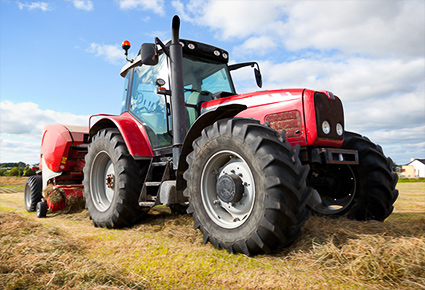Note: This article is the last of seven articles comparing methods of protective metal finishing processes.
Part 1: CARC Environmentally Safe?
Part 2: Anodizing
Part 3: Galvanization
Part 4: Electroplating
Part 5: Autodeposition/A-Coating
Part 6: Powder Coating
Part 7: E-Coat vs A-Coat
We’ve shared information on both protective coatings in these articles.
E-coating
A-coating
If someone were to walk 50 feet high while on a catwalk overlooking the process lines for each method, without knowing much about either, would they know the differences between them?
In most articles comparing two similar methods, the answer to the question, “Which is better,” always results in the same thing: it depends. The better process depends on variables like substrate types, exposure to the environment, how they use the resulting components, and so on.
I’ve learned while researching and writing these articles that many of the same industries use both processes. Each coating method has its unique advantages and disadvantages over the other. A feeble analogy applies to apples: which type of apple do you prefer, a red one or green?
However, there is one source that discovered a significant difference between the two coating processes. What is it, you ask? Read further to find out.
Quick Review
A-Coating
The Autophoretic® coating (a-coating) process chemically deposits an organic polymer emulsion on the surface of a clean metal substrate using a water-based method. There’s no direct contact between the metal and the organic material, only a chemical compound.
E-Coating
Electrophoretic deposition (e coating/electric coating) is like electroplating. The electroplating process uses electric current reducing dissolved metal cations, forming a thin, coherent metal coating.
A-Coating Advantages
- Unlimited Throwing: wherever the coating reaches, it coats
- Coating Complex Components: complete immersion provides complete coverage
- Abrasion Resistance: Exceptional wear resistance
- Environmental: VOC free
- Cure Temperature: cures at 220 ºF
- Electricity Free: process relies on a chemical reaction, not a current
E-Coating Advantages
- Unlimited Throwing: whatever the coating reaches, it coats
- Coating Complex Components: complete immersion provides complete coverage
- Abrasion Resistance: Exceptional wear resistance
- Greater Thickness Control: adjusting the voltage controls the coating’s thickness
- Reductions: less necessary rework, paint usage, and VOC emissions
The Biggest Difference
In their book, Organic Coatings: Science and Technology, the writing team of Zeno W. Wicks, Jr., Frank N. Jones, Socrates Peter Pappas, and Douglas A. Wicks have discovered a significant difference between the processes—emphasis added:
Corrosion protection by intact autophoretic films is excellent, but when gouged through, the protection is inferior to the cationic primer. The resistance of the autophoretic coatings to brake fluid is inferior. Thus, cationic E-coat is preferable for coating car bodies, and autophoretic coating uses are limited to applications where the more limited corrosion protection is adequate: for example, seat structures, fans, headlight casings.
Both methods provide excellent protection to metal substrates. E-coating, however, offers greater protection in harsher environments than a-coating. Breaking down the molecular components for the various types of coating material is an article onto itself. For this article, I'm keeping it simple.
Rick Aquino has over 30 years of coating and finishing experience and is the business development manager for Pneu-Mech. Aquino said that OEM of agriculture equipment take steps to protect their significant investments:
Due to the corrosive nature of agricultural steps, ag machine builders commonly use the e-coat process on their most demanding (and expensive) machines, such as large tractors, combines, and sprayers. This action validates that e-coat is a superior corrosive protecting coating.
Solvents used in the e-coating process have a higher resistance to environmental influence. Scratching the component exposes the metal to everything the outside world throws at it. Studies show e-coating offer greater acidic and water resistance than a-coating primarily because of the fluid's chemical makeup.
 Providing the same level of resistance using the a-coating process is possible; however, it requires depositing more significant quantities of fluid on the substrate. While those increased fluids protect the metal, they also create increased rigidity and brittleness, traits creating substantial issues in industrial applications.
Providing the same level of resistance using the a-coating process is possible; however, it requires depositing more significant quantities of fluid on the substrate. While those increased fluids protect the metal, they also create increased rigidity and brittleness, traits creating substantial issues in industrial applications.
Because of this advantage, e-coating provides better protection across the spectrum of applications than the a-coating process.
In Sum
An apples-to-apples comparison between a-coatings and e-coatings illustrates two different leaves on the same branch of the apple tree. I must admit that locating objective reviews of a-coating was difficult. The organizations writing articles describing the process either developed it or used it. E-coating, on the other hand, is widely used and written about in exhaustive research papers and technical articles.
If you live in northern climates, you’ll know what I’m talking about. In January, you may get chilled inside your home, so you put a sweater for warmth. However, walking outside in January in a sweater, especially here in Wisconsin, isn’t such a great idea, so you wear a warm winter coat.
Using this analogy comparing the two protective coating process, if the application calls for exposure to corrosive or rough environments, e-coating provides superior protection over a-coating.
It’s as simple as that.
What do you think? Am I wrong? Email me to explain.